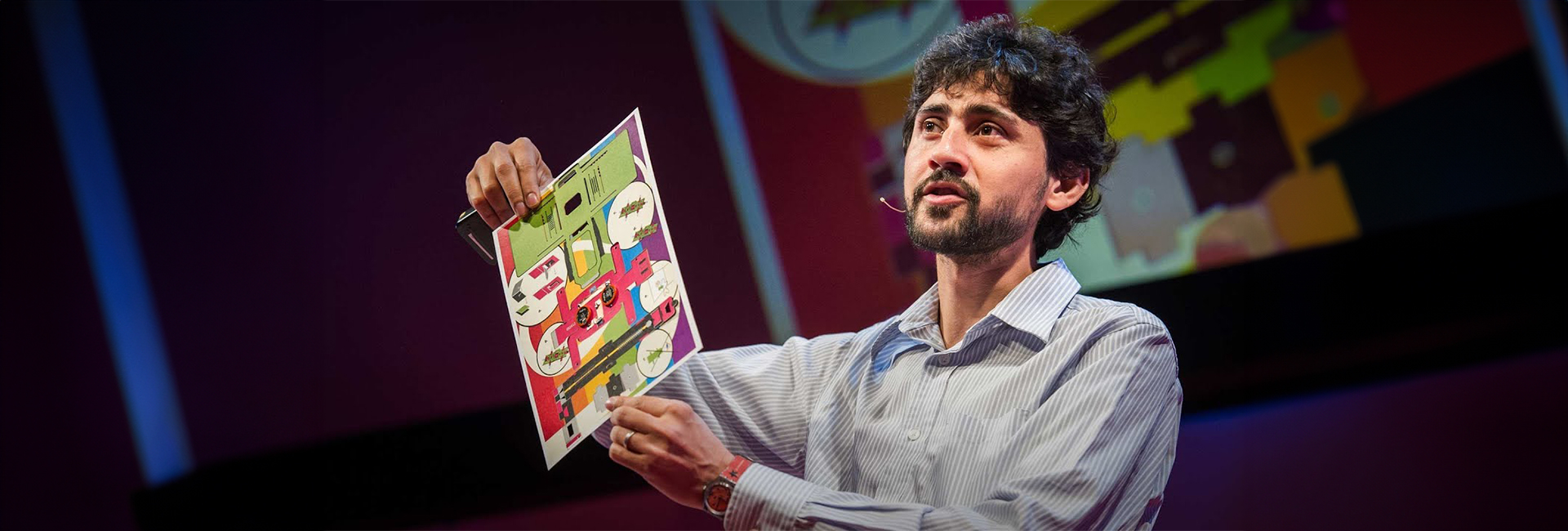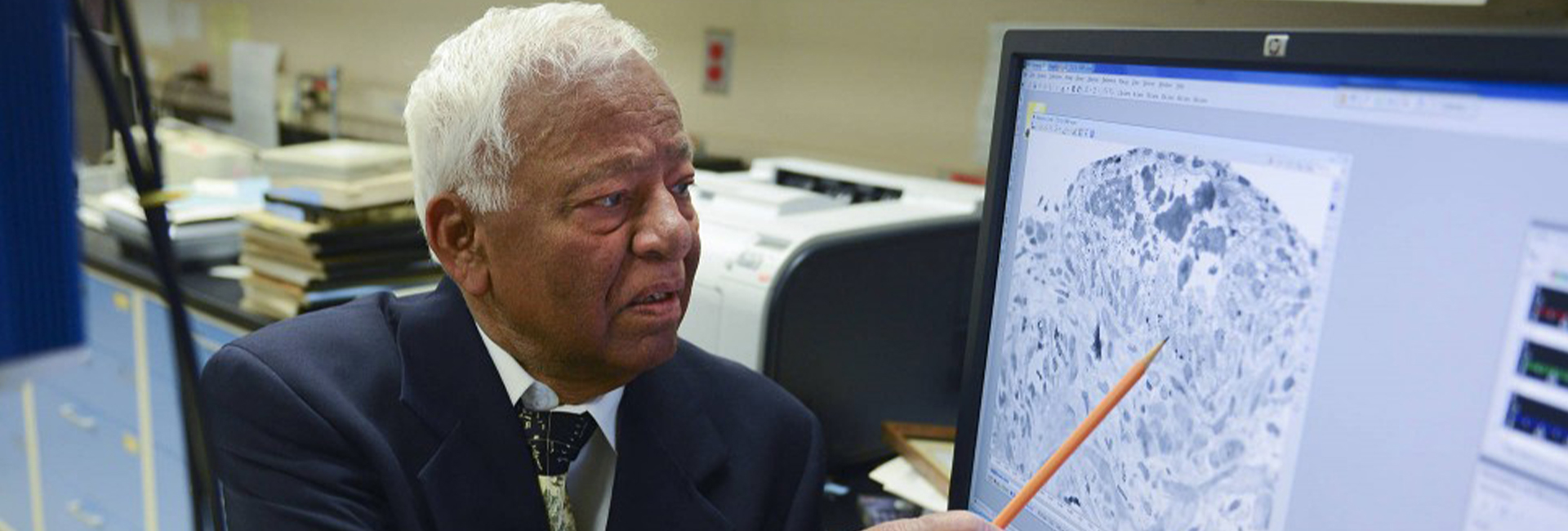(December 6, 2024) In the remote Amazon rainforest, a researcher examines a moth’s wings through a microscope, uncovering colours that shift like a kaleidoscope. Thousands of miles away in Hyderabad, a ninth-grader uses the same tool to study his cheek cells. This isn’t an ordinary microscope but a Foldscope — a paper-based device costing less than $1 that works like professional equipment. Created by Dr. Manu Prakash, this invention represents a groundbreaking shift in science and medicine, led by the Indian-born Stanford professor.
Dr. Prakash’s journey of creating affordable, precise tools is as unique as the Foldscope itself. Born in Mawana, a small town in Uttar Pradesh known for sugar production, he grew up in a home that encouraged curiosity. From his childhood experiments in India to running an innovative lab at Stanford, Prakash has always followed his intuition, which he says drives much of his work.

Dr Manu Prakash
A Question Sparks a Movement
Dr Manu’s breakthrough began with a question: “What is the best microscope you can build for under $1 in parts?” The Foldscope was his answer — a tool born of necessity and brilliance. Folded like origami from paper, the Foldscope combines simplicity with high functionality, offering magnification up to 2,000 times. “The inspiration came from field stations,” recalls Dr Manu, “where bulky, broken microscopes were the norm, if they existed at all”.
Since its invention, the Foldscope has reached millions, serving students, researchers, and medical workers across 135 countries. The tool’s applications range from diagnosing diseases like malaria to studying agricultural pests. Its low cost and easy accessibility reflect Dr Manu’s idea of “frugal science” — a concept that rethinks traditional approaches to innovation.
The Foundation of Curiosity
Growing up in Mawana, Dr Manu’s childhood was full of exploration. Encouraged by his mother, a political science professor, he and his brother turned their home into a makeshift lab, building rockets and dissecting animal specimens. At seven, Manu’s passion for science manifested when he attempted to build a makeshift microscope using cardboard tubes from shuttlecock holders and lenses from his brother’s glasses. Though basic and initially unsuccessful, it sparked his lifelong interest in creating tools with limited resources. “This informal, curiosity-driven learning time fueled my love of science,” he said.
His love for learning led him to IIT Kanpur where he pursued computer science but found himself drawn to hands-on experimentation. He spent much of his time in the robotics lab, designing projects like an omnidirectional walking spider-robot and creating programs that mimicked the drawing style of children. His passion for building and tinkering led him to Massachusetts Institute of Technology, which he describes as a haven for inventors. “There was this idea of freedom—no one tells you what to do, and you can explore whatever you want,” the Global Indian recalls. It was at MIT that Prakash explored groundbreaking concepts, including a computer powered by microfluidic bubbles.

A turning point came during a visit to a rural clinic in India in 2010. A photograph of Mahatma Gandhi using a microscope struck a chord. The image highlighted the importance of accessible science in difficult times and inspired Manu Prakash to dedicate his career to creating tools that anyone could use to explore and solve problems. This led him to frugal science, which is about creating affordable, simple, and effective scientific tools to make science accessible to everyone, especially in resource-limited settings. It focuses on innovative designs that solve problems at a fraction of traditional costs.
Reinventing the Everyday
The Assistant Professor at Stanford runs a lab at the university which is a hive of creativity, where students and researchers work on projects that challenge the status quo of scientific tools. “We don’t know whether something we are working on will ever be useful,” Prakash admits, “but we think there is something there.”
This approach gave birth to Paperfuge, a centrifuge inspired by an ancient toy — the whirligig. By threading a string through a paper disc and pulling it to spin, the Paperfuge reaches speeds of 125,000 RPM, enough to separate plasma from blood in under two minutes. “The idea of frugal science is not about hacking something together quickly,” explains Prakash. “For each of our tools, there are 10-20 pages of math involved”.
The Paperfuge costs just 20 cents but performs on par with lab centrifuges worth $10,000, demonstrating that simplicity and affordability can go hand in hand with sophistication.

A World Transformed
The Foldscope and Paperfuge are just the start of Manu Prakash’s mission to make science accessible to all. His lab has created tools like a mosquito chip that helps detect diseases and a smartphone attachment for diagnosing oral cancer. These inventions, along with others like a method to identify mosquitoes by their wingbeats, follow a simple principle: making scientific tools affordable and available to everyone who needs them, especially in underserved areas.
“Frugal science is the difference between 1% of the population or billions of people having access to a solution,” says Prakash. This vision has driven the global impact of his creations. Millions of Foldscopes have been distributed worldwide, used not just in classrooms and clinics but also for applications like identifying fake medicines, detecting bacteria in water, and studying biodiversity. By breaking barriers to access, Prakash’s tools are changing lives across continents.
Recognition abroad
Dr Manu’s journey in frugal science hasn’t just changed lives — it’s turned heads. Dubbed a “genius” by the MacArthur Fellowship, he earned the prestigious award for redefining how science can be done on a budget. His Foldscope — a $1 paper microscope — made waves, winning the Golden Goose Award for transforming a simple idea into a global game-changer. The National Institutes of Health also took notice, honouring him with the Director’s New Innovator Award for his revolutionary low-cost tools. Each recognition underscores a single, powerful idea: science should be for everyone, everywhere.
Indian Minds Driving Innovation in the US
Dr Manu Prakash is part of a thriving Indian community at Stanford and across the United States, where Indian scientists, engineers, and entrepreneurs are making significant contributions. Universities like Stanford bring together talented minds, including many from India, who excel in fields like artificial intelligence and biotechnology. These scholars often draw on their experiences in resource-limited environments, leading to innovative solutions focused on accessibility.
“Growing up with limited resources in India shaped my approach to science,” Prakash says, highlighting how his background inspires his work in frugal innovation. His story shows how the Indian diaspora connects cultures and ideas, driving impactful change globally.

Vision Ahead
Dr. Manu’s work is about more than solving problems—it’s about sparking curiosity. He dreams of a world where every child has a microscope in their pocket, inspiring a new generation of scientists free from traditional barriers. “Lack of access creates barriers in people’s minds,” he says, and his mission is to break those barriers.
From a curious boy in Mawana to a global advocate for frugal science, Manu Prakash’s journey shows how simple tools can drive big change. His story proves that science isn’t just about knowledge—it’s a gift to humanity.
- Follow Dr Manu Prakash on LinkedIn
Read a similar story of Vishal Gupta, preventing data loss through Seclore Technology.




